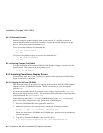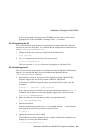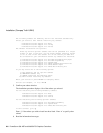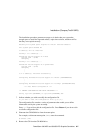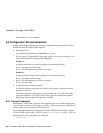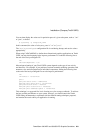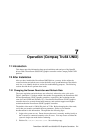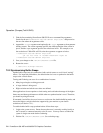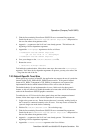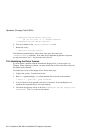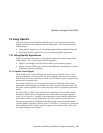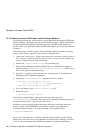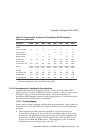Operation (Compaq Tru64 UNIX)
7–2 PowerStorm 300 AGP and 300/350 PCI Graphics Controllers
3.
Find the line containing PowerStorm 300/350 X server command-line arguments.
Search for the text “
PowerStorm 300/350 Server args start” and proceed to
the next line where the arguments reside.
4.
Append the
–screen argument and optionally the –vsync
argument to the arguments
already present. The screen argument specifies the width and height of the screen in
pixels, and the vsync argument specifies the refresh rate in Hz. For example, to set
the resolution to 1280x1024 at 85 Hz, alter the arguments to appear as below:
! PowerStorm 300/350 Server args start
-pn –su –bs –nice –2 –screen 1280x1024 –vsync 85
! PowerStorm 300/350 Server args end
5.
Save your changes to the /var/X11/Xserver.conf file.
6.
Restart the server:
> /sbin/init.d/xlogin restart
7.2.2 Synchronizing Buffer Swaps
Double-buffer swaps may be synchronized with vertical retrace to avoid visual “tearing”
effects. For improved performance, the default behavior is not to synchronize the buffer
swaps to the vertical retrace.
Tearing and flickering can occur for a combination of reasons:
•
Many large triangles are being processed.
•
A large window is being used.
•
High resolution and refresh rate values are defined.
Most applications do not experience visual tearing and could take advantage of the higher
frame rates and better performance available when no synchronization is used. Therefore,
you should try using this mode.
If unwanted visual effects do occur, however, use the tear-free double-buffering mode, and
choose the highest vertical refresh rate supported by your monitor at your chosen
resolution (see Section 7.2.1).
To enable double-buffer swap synchronization, follow these steps:
1.
Login to the system as root. Ensure that no other user is currently working locally at
the X console or connected remotely to the X server. You may choose to reboot the
system in single-user mode before continuing.
2. Edit the file
/var/X11/Xserver.conf. Save a backup copy.



